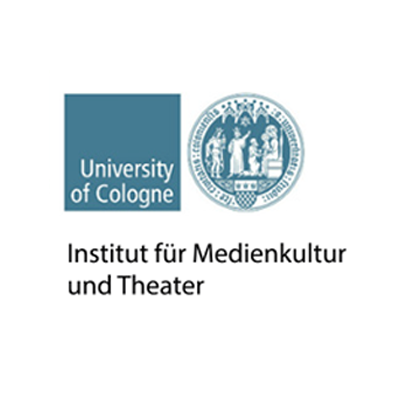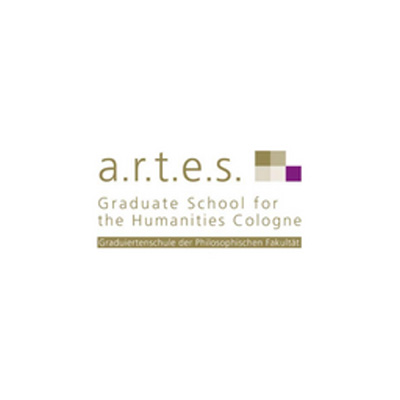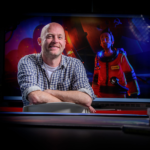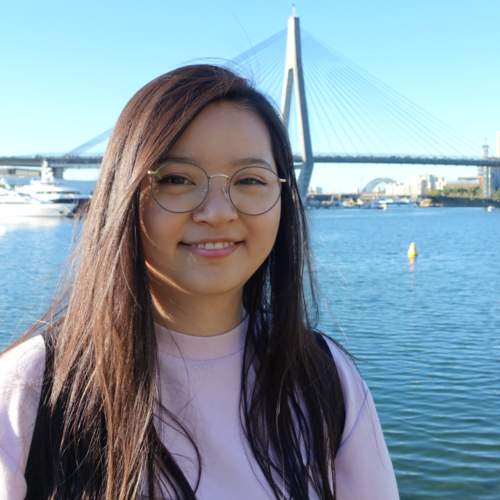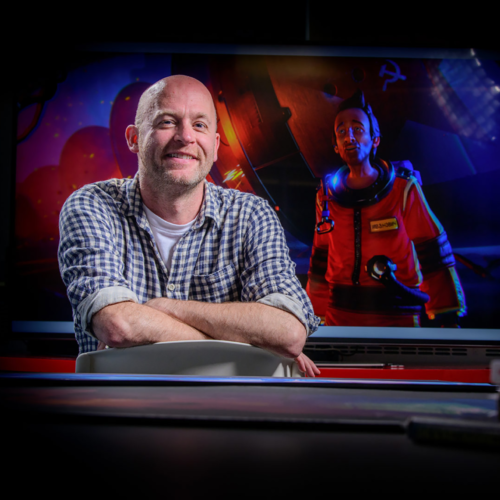

About
For the eleventh time, the Clash of Realities international research conference is providing the opportunity for interdisciplinary exchange and dialogue. Experts from the academy, science and research, economics, politics, and the game industry will discuss pressing questions concerning the artistic design, technological development, and social perception of digital games, as well as the spreading of games literacy.
The conference welcomes scholars, social scientists, game developers, specialists in education and media, up-and-coming creative talents, students, and all those interested in and excited by digital games.
This year, however, some things are different than in the past. As we all know, health and safety measures during the Covid-19 pandemic prevent us from meeting in person. Therefore, we split the conference into two parts. The first one, which will take place from November 18-19, 2020, will be completely online.
Each of the summits will give a unique online presentation about pressing topics in game studies, media and education, game development, new technologies, and game entrepreneurship and discuss these topics with an enthusiastic online audience. This year’s conference – as well as the second part next year – is co-organized by the Cologne Game Lab, TH Köln – University of Applied Science – and the Department for Media Culture and Theater at the University of Cologne.
Clash of Realities - Part I
The digital conference will begin with the Young Academics Workshop on November 18th. On the Main Conference day, November 19th, we introduce our five summits for the 11th Clash of Realities in very different and individual forms.
Each summit presents its topic comprised in a 1 hour session — as panel discussion, virtual exibition, video clip, or micro lectures.
The second half of the day features exciting keynote presentations by renowned speakers from all around the globe.
We are looking forward to welcoming you online in November 2020 and in person next summer in Cologne.
Program
November 18, 2020 | 9:45 – 14:00 CET – Young Academics Workshop
Creating And Thinking the Aesthetics of Playable Atmospheres [more]
November 19, 2020 | 10:00 – 15:00 CET – Summit Morning
High Impact Trends in Games – AI in Natural User Interfaces [more]
(Social, Cultural and Civic) Participation in Virtual Spaces [more]
How to nurture a culture of entrepreneurship in the videogame industry [more]
Playful Materialities [more]
Motivation, Expectations, Innovation [more]
November 19, 2020 | 15:15 – 17:45 CET – Keynote Afternoon
This year's Media Education Summit
See the videoKeynotes
Timetable
1. Young Academics Workshop
Nov. 18 09:45 - 10:00
09:45 - 10:00Welcome and Introduction
By Su-Jin Song Cologne Game Lab, TH Köln – University of Applied Sciences 10:00 - 10:20
10:00 - 10:20I don't Feel at Home in this World Anymore - A Closer Look at Uncanny Atmospheres in Walking Simulator Games
By Katja Aller University of CologneWith a focus on gamespaces, avatars, and the player's point of view, this paper (WIP) explores the spatial atmosphere of „the uncanny“ in walking simulator games. During my past research I came across many well known walking simulator games and noticed that most of them (such as Gone Home, Dear Esther, or What Remains of Edith Finch) share the trait of an eerie mood. In my paper I want to show why this “ubiquity” of uncanny elements is more than just personal perception and how walking simulators reproduce atmospheres of the uncanny through genre specific characteristics. The definition of the uncanny used in this paper is mainly based on the works of Freud, Jentsch, Fuchs, Heidegger, and Böhme. Exploration of the gamespace is a main characteristic of the walking simulator. Many walking sims use architecture and objects to (re)produce the uncanny, a particular form of spatial atmosphere. Uncanny spaces are characterised by a certain ambiguity that arises when the familiar becomes strange. Das Heimliche becomes das Unheimliche. Both Gone Home and Edith Finch, for example, use domestic settings in which normality and alienation merge into a state of ambiguity. In both games, the protagonist returns to her family home whereby she experiences the return “[zum] Altbekannten, Längstvertraute[n]”. There, Freud locates the roots of the uncanny. The interaction between player and the digital figure of the avatar reflects another feature of the uncanny: the player controlled entity is neither dead nor alive which, according to Jentsch, is an uncanny state. Most walking simulators use first person perspective. Through this perspective, the player's sense of peripheral vision is removed. In real life, the resulting 'tunnel vision' usually occurs when the body senses fear or distress. The genre-typical POV thus adds to the uneasy atmosphere.WhereZoom 10:20 - 10:40
10:20 - 10:40Atmosphere as Rhetoric in Assassin’s Creed: Odyssey
By Rita Zhang University of MelbourneIn the last few decades, video games have become an increasingly mainstream mode of engagement with the ancient past. They have had distinct success in providing players with immersive, atmospheric worlds that “feel” real. This paper explores the role of atmosphere in video game (re)constructions of ancient worlds and their influence over perceptions of historical facticity, or verisimilitude, with an anthropological lens. Using Ubisoft’s 2018 release ‘Assassin’s Creed: Odyssey’ as a case study, this paper identifies two major components of atmosphere – sensory realism and virtual embodiment – and examines how they are evoked. It further utilises Bourdieusian critical theory to elucidate the power relations between game developer, medium, and player, and demonstrates how atmosphere is deployed as a rhetorical device by developers. Finally, it evaluates how effectively atmosphere suspends disbelief and convinces players of historical authenticity. Through semi-structured interviews with players and online discourse analysis, this paper finds that the immersive nature of photorealism and agentive fallacy provided by the game’s open world and role-play mechanics suppresses how critically players engage with the highly convincing reconstructions. This paper therefore demonstrates the significance of atmosphere in video games, particularly those levelled at mainstream audiences as popular representations of antiquity. It also highlights the value of video games as facilitators of interactive and engaging experiences where one may access the no-longer-accessible past, as well as the importance of active and critical engagement with their content in the face of the rhetoric of atmosphere.WhereZoom 10:40 - 11:00
10:40 - 11:00"Wind's Howling": Atmospheres in Digital Games Between Meteorological Phenomena and Stimmung
By Magdalena Leichter University of InnsbruckWhile seemingly functioning as a throwaway line the protagonist Geralt mutters to himself in The Witcher 3: Wild Hunt, the above-cited quote also serves as an example of how diverse the approach to atmospheres in digital games can be:Primarily, the line acts as a re-centering element, immersing players in the game's world, reminding them that Geralt feels the atmosphere around him. The line also verbalizes that the game's intradiegetic atmosphere in the sense of meteorological phenomena surrounding and influencing gameplay and story. Additionally, the line adds to the atmosphere as Stimmung, since it further roots the game in traditional Slavic folklore. Here, as a Reddit user points out, the howling wind would be interpreted as a sign of bad luck and change – two aspects adding to the game's global themes. In this contribution, I will focus on 'game-atmospheres' as remediated meteorological phenomena. My thesis is that, as a hybrid art form, digital games draw from concepts of atmospheres found in other media formats such as literature or films and the players' tacit knowledge about meteorological phenomena and their influence on cultural and societal aspects. Based on these observations, I intend to draft a concept for contextualizing different connotations for and uses of 'atmospheres' as meteorological phenomena in digital games. Although they are often viewed as mere backgrounds or accompaniments, I want to bring them to the foreground and, by taking an intermedial approach, show the atmosphere's role in producing realism, context, meaning, and Stimmung in digital games.WhereZoom 11:00 - 11:20
11:00 - 11:20Transcultural Production, Transcultural Atmosphere: Atmosphere and Popular Culture in Ghost of Tsushima
By Anh-Thu Nguyen University of CologneThe developers of GHOST OF TSUSHIMA (2020) made no secret about their main source of inspiration for their game set in the 13th century feudal era of Japan: “So much of our inspiration comes from samurai cinema – not just Akira Kurosawa […].” (Tapsell 2020) Rather than foregrounding a claim on historical accuracy as is often the case for so-called historical games, the developers explicitly state pop culture to be their main point of reference. How has this approach shaped the game itself? What elements were taken from modern (Japanese) pop culture to make up a distinct atmosphere of feudal Japan? What does this mean for the player? As American developer Sucker Punch Productions closely worked with their Japanese localisation team to ensure a specific atmosphere constituting 13th century feudal Japan, rather than accusing the developers of cultural appropriation, the game’s production and aesthetics can be understood as a transcultural transformation primarily derived from popular culture as well as tourist destinations and myths. As far as GHOST OF TSUSHIMA is concerned, media-critical analysis may not only look at the obvious cinema references but also at media-specific aspects of the game that are part of the game’s atmosphere: from audio-visual cues in the form of wind, birds and foxes giving directions, weather simulations and landscapes embodying specific seasons, to a player’s pilgrimage to shrines by traversing them in climbing puzzles. To expand the current scope of the field of game studies that usually does not take Japanese cultural contexts into consideration despite Japan’s immense influence on the video game market (Schules 2015, Picard and Pelletier-Gagnon 2015), this submission is part of a bigger on-going project engaging with games that are either created by Japanese developers or informed by Japanese culture.WhereZoom- 11:20 - 11:30
Coffee Break
 11:30 - 11:50
11:30 - 11:50Sounding the Atmosphere
By Björn Redecker Faculty for Educational Science, University of BielefeldSound plays a crucial role in creating virtual worlds. It is a vital part of digital games, fillingthem with life and undoubtedly enhancing the experience for players. Ever since Al Alcorn“poked around the sync generator to find an appropriate frequency or a tone” (Alcorn in Kent 2001, p. 42) for Pong (Atari 1972) and created the bip that broke the silence that had left digital games incomplete, virtual worlds have become livelier, more authentic and, above all, the audio- visual form of media as we know it today. The very same can be said about “music, as the ordered succession of sound” that serves as “a vehicle for the transportation of atmospheric values” (Herzfeld 2013, p. 147, see also Haffter 2015, p. 9). In fact, the very first examples of Game Music were comprised of “the sounds that were already in the machine” (Alcorn in Kent 2001, p. 42). Game Sound as well as Game Music are key design elements in the sense that they can greatly support visual efforts to create an atmosphere and are furthermore capable of evoking as well as adding to different atmospheres themselves. From a design perspective, they are neither an afterthought, nor a passing fad, as “music is not a redundant echo of other aspects of the game, but […] a central part of the audiovisual experience” (Summers 2018, p. 6). This is due to the immediate nature of sound and music, whose direct connection to our feelings and emotions has been a frequent talking point in historic musicology.1 However, how exactly this immediate connection works has never been clearly defined or fathomed and remains a major point of contention within the musicological community (see Mies 1912, p. 399). As mentioned in the Call for Papers, the term ‘atmosphere’ is hard to grasp. It is frequently used but rarely broken down to what it really means or implies. At the same time, ‘writing about music is like dancing about architecture’2, which further complicates the issue. Albeit these difficult prefixes, this paper aims to describe and discuss the interrelationship between sound, music, and atmosphere. In doing so, it will address the connection between music and space and touch upon techniques like ‘Tonmalerei’ (tone painting), constituting musical elements such as texture as well as musical concepts like musique concrète. It will use examples from games like Inside (Playdead 2016), Kona (Parabole 2017), The Longest Journey-Series (Funcom and Red Thread Games 1999-2014), Virginia (Variable State 2016) and others.WhereZoom 11:50 - 12:10
11:50 - 12:10Ambient Games as Playable Atmospheres
By Vadim Nickel Cologne Game Lab, TH Köln – University of Applied SciencesIn the liner notes for his 1978 album Ambient 1: Music for Airports, Brian Eno stated that ambient music must be as ignorable as it is interesting. He identified ambient music as a genre that can be engaged over various levels of intensity, from being merely a calm auditive layer at an otherwise busy airport to holding the full attention of the listener, encompassed in its spherical sounds. When applying this idea to digital games, a new kind of game emerges: the ambient game. Adapted from Eno’s concept, the ambient game can be experienced on different layers of engagement, which vary in intensity: It may serve as a screensaver when devoid of player input, as a walking simulator for mere spatial exploration, and subsequently as an interactive ludic experience, the nature of the interactivity depending on the game genre. This paper aims to present ambient games as playable atmospheres by iterating through the aforementioned layers of engagement in a reversed order: As layers of interaction are removed, atmosphere emerges as the underlying structure. The removal of interaction layers in games is not a new practice and has been performed in the context of artistic game modifications. One such example is Cory Arcangel’s 2002 work Super Mario Clouds. In the context of ambient games, however, one shall differentiate between a voluntary removal of interaction layers, dependent of the player’s decision not to engage, and embedded or integrated removal, which is static and may not be simply reversed, such as in Arcangel’s work.WhereZoom 12:10 - 12:30
12:10 - 12:30Systemic Atmospheres in Roleplaying Games - Investigating the Paradox of Imagined Atmospheres within Imagined Spaces
By Jonathan Jung Johansen ITU – IT university of CopenhagenAtmospheres are imagined spaces that yet manage to impress ourselves upon us physically, with goosebumps, frisson, or the relaxation of the tension (Pallasmaa, 2014). These atmospheres exist only inside the mind of the experiencer. Atmosphere in buildings cannot be reduced to the formal qualities of a space: Juhaani Pallasmaa argues that atmosphere is a multi-sensory, culturally involved process, particular to the place it is experienced, noting that they are an intermediate between the perceiver and the world that invokes the perceivers entire sense of being (Pallasmaa, 2014, p. 231)Gerhard Bohme argues in “The art of the stage set as a paradigm for an aesthetics of atmospheres” that the aesthetic impressions of a phenomena, its atmosphere, may be created by the tuning its environment. Bohme likens this to setting a stage, and argues that the creation of atmospheres can be understood through the concrete praxis of stage-setting (Böhme, 2013, p. 4,5). Viewed in this manner, the atmosphere is intimately tied to the situation where it is experienced, and there may be concrete procedures with which to tune the environment. Through these two lenses, roleplaying is the setting of a stage for an imaginary world, and through dialogue, all players take on the roles of both actors, authors, and set designers - finding out what will happen, rather than pre-planning it like a plot, while creating a singular atmosphere felt by all players present. As such, atmospheres experienced when playing a roleplaying game are puzzlingly imagined spaces embedded in the material qualities of imagined spaces, the suggested actions of the characters, and the actions which the players perform around the table.What I propose is the development of a model that can explain how imaged space, character actions, player actions and mechanics with particular means create, sustain, and dispel atmospheres in roleplaying games.WhereZoom 12:30 - 12:50
12:30 - 12:50Experimental Cinema & VR Sensorial Experiments
By Felipe R. Martínez ifs Internationale Filmschule KölnIt is generally accepted that VR offers a broad range of possibilities for narration and sensorial experiences. However, the limitations of mainstream cinema language for VR narration development are increasingly apparent. This particular media-history conjuncture has a precedent one hundred years ago: The birth of cinema and the exploration of experimental film, which attempts to hack the psyche perception of the very fabric of reality, as well as breaking the self-referential logic of theater and literature. In this paper, I attempt to establish a connection between techniques ofExperimental Cinema and the creation of avant-garde sensorial atmospheres for VR.This paper is divided into 3 broad parts: Part 1 provides an analysis of theory and praxis in the works of Dziga Vertov and Kino-Eye for a non-individual narrative, of Maya Deren and the staging of dreams by ritualistic modes, and Raoul Ruiz and his poetic for spiral narratives. Part 2 outlines some of the key principles behind aesthetic and technical atmospheric elements on outstanding immersive VR Experiences such as Note on Blindness, Bjork's "family", and a selection of works by the MIT-Media-Lab. In the remainder of the paper, I will focus on establishing a parallel and comparative analysis of the case of studies and its poetic and formalistic dynamics from a media theory point of view. Still, a comprehensive manual of experimental Cinema into VR is beyond the scope of this paper, and its main objective is to shed light on underlying principles and dialectic dynamics that can further enrich the development methods for the creation of deeper and newer atmospheres. Hopefully, this paper can suggest ways for a conscious craft of human-machine interfaces that transcend the limits of theatrical representation andexpand the possibilities of sensorial perception into a brand new myriad of dreams.WhereZoom- 12:50 - 13:00
Coffee Break
- The Chinese Room’s (TCR) games have always been held in high regard for their ability to create compelling, emotionally rich and heavily atmospheric worlds. In this lecture, I’ll talk about some of the practical ways in which we go about that, and how this relates to an underpinning stance on consciousness, experience, presence and gameplay that derives from my previous life as an academic. We’ll chart the trajectories of studying VR, ritual, storytelling, early history, psychology and philosophy through to TCR’s historic design ethos. We’ll talk about how Half Life relates to Lascaux, why Dear Esther’s vision of reality comes straight from William Burroughs and why Victor Turner should be essential reading for any game designer. It’ll be a blend of personal reflection, practical application and unanswered questions that continue to inspire, annoy and occupy me as this journey into the oldest medium in the world continues.WhereZoom
2. Summit Morning
Nov. 19 10:00 - 10:10
10:00 - 10:10Welcome and Introduction
By Björn Bartholdy Cologne Game Lab, TH Köln – University of Applied Sciences, Benjamin Beil University of Cologne, Gundolf S. Freyermuth Cologne Game Lab, TH Köln - University of Applied SciencesWhereOnline via Eventbrite 10:10 - 11:00
10:10 - 11:00Games Tech Summit - High Impact Trends in Games - AI in Natural User Interfaces
By Daniela Kolbe Member of the German Bundestag and Chairwomen of the Enquete Commission for AI, Marc Erich Latoschik Human-Computer Interaction, University of Würzburg, Roland Klemke Cologne Game Lab, TH Köln – University of Applied Sciences, Martin Lorber Electronic Arts, Sebastian von Mammen Games Engineering, University of WürzburgMarc Erich Latoschik: From A(vatars) to Z(ero) Latency Avatars are the digital replicas of our physical selfs. They are the embodied interface to virtual words and our alter-ego in the digital realm. In contrast to the physical world, avatars can have almost any conceivable shape and appearance and are not restricted to match our original biological counterparts. Notably, this freedom consistently causes interesting effects regarding the plasticity of our body schema and resulting changes our self-consciousness: Our body changes our mind. These effects fuel philosophical questions about dualism and the relationship between mind and matter and initiate envisioning of a multitude of potential futures and consequences of an embodied internet. The talk will highlight the state of the art, our current findings of known effects, technical limitations and options, and the philosophical questions arising with such a technology.WhereOnline via Eventbrite 11:00 - 11:30
11:00 - 11:30Media Education Summit - (Social, Cultural and Civic) Participation in Virtual Spaces
By Nina Kiel Freelance game developer and video games journalist, Friederike Siller Institute for Media Research and Media Education, TH Köln - University of Applied Sciences, Jürgen Sleegers Institute for Media Research and Media Education, TH Köln - University of Applied SciencesWhereOnline via Eventbrite 11:30 - 12:30
11:30 - 12:30Game Entrepreneurship Summit - How to Nurture a Culture of Entrepreneurship in the Videogame Industry
By Peter Kreutter Director of the WHU Foundation, Jörg Müller-Lietzkow HafenCity University Hamburg, Christian Zabel TH Köln - University of Applied Sciences, Odile Limpach Cologne Game Lab, TH Köln – University of Applied Sciences, Pierre Schlömp TH Köln - University of Applied SciencesPeter Kreutter: An Outside-In View: How the Games Industry Can Link Entrepreneurship and Purpose for Real Social Impact For half a decade now, the non-profit sector has been increasingly affected by the trend toward digitization. In search of role models in other areas, foundations and other NGOs are turning to the gaming industry. Peter will talk about his personal experiences working for a non-profit organization and how he became fascinated by the entrepreneurial spirit and dynamics of the gaming industry. He will discuss some ideas of how both sectors can learn from each other for greater social impact and purpose. Jörg Müller-Lietzkow: Are the Public Universities Ready for Game-Entrepreneurs? During the last 12 years, I was running a Games Lab at the University of Paderborn before becoming President of the HafenCity University of Hamburg. We saw many great projects and I often wondered, if they might be a good starting point for founding a company. We, like many other universities, had a transfer office and other support mechanisms to accelerate young Start-ups but soon we learned: Good game students are not always interested in the economic aspects which are absolutely necessary for founding and managing a company. Over the last couple of years, I learned that there is a difference between those projects which are suitable for academia and those ready for the market. With my impulse lecture I want to state what I think has to be done to foster a more business oriented Start-up culture in this area of studies. Christian Zabel: Where Do Virtual and Augmented Reality Companies Settle? The Role of Clusters and Networking for Young XR Companies in Germany. Based on the first-ever representative online survey of Germany’s XR industry, different patterns of where and why firms choose their company location emerge. Given the high dynamic of around 70 company creations per year in Germany alone, the presentation points out the factors that entrepreneurs from this industry find relevant when locating their companies. This also highlights interesting insights in which factors are relevant when new companies in this sector are created.WhereOnline via Eventbrite- 12:30 - 13:00
Lunch Break
 13:00 - 14:00
13:00 - 14:00Game Studies Summit - Playful Materialities
By Jon-Paul C. Dyson Director of the International Center for the History of Electronic Games and Vice President for Exhibits, Benjamin Beil University of Cologne, Gundolf S. Freyermuth Cologne Game Lab, TH Köln - University of Applied Sciences, Hanns Christian Schmidt University of CologneHow does play exist in the material world? Is a video game experienced differently on an emulator than the original arcade version? How do game mechanics migrate from physical board games, dolls, or toys to virtual experiences? The Strong National Museum of Play has the world’s most comprehensive collection of toys, dolls, games, video games and other artifacts of play, and this tour by Dr. Jon-Paul Dyson will provide a quick overview of the collection as well as an interactive discussion of how specific artifacts can open up discussions about questions like these that explore the materiality of play. A Virtual Tour of the Strong National Museum of Play in Rochester, New York. By Jon-Paul Dyson, Vice President for Exhibits and Director of the International Center for the History of Electronic Games. Followed by a closing panel with Benjamin Beil, Gundolf S. Freyermuth and Hanns Christian Schmidt.WhereOnline via Eventbrite 14:00 - 15:00
14:00 - 15:00Game Development Summit - Motivation, Expectation, Innovation
By Sonia Fizek Cologne Game Lab, TH Köln - University of Applied Sciences, Johannes Roth Mimimi Games, Christoph Safferling Ubisoft Blue Byte, Björn Bartholdy Cologne Game Lab, TH Köln – University of Applied Sciences, Klaus Gasteier Berlin University of the ArtsBjörn Bartholdy and Johannes Roth: Interview
Live Interview with Johannes Roth - Co-Founder and CEO of German Indie developer MiMiMi Games. With titles like "Shadow Tactics: Blades of the Shogun" or the "Desperados" series, the studio is one of the most successful independent companies in the German developer scene. Close to the wishes and needs of the players, the studio develops successful products that create a high level of player loyalty.We will ask Johannes about his company's strategy regarding player motivation… Sonia Fizek: Between Deep Intuition and Deep Data Christoph Safferling: What makes us play?WhereOnline via Eventbrite
3. Keynote Afternoon
Nov. 19 15:15 - 16:00
15:15 - 16:00Princess in Another Castle: Business Model Innovation as a Competitive Advantage in Gaming
By Joost van Dreunen NYU Stern School of BusinessCreative industries are characterized by massive successes and an utter absence of conventional business rationale. None more so, perhaps, than video games. Interactive entertainment is easily one of the least understood and most innovative entertainment sectors. Its rapid rise to become a $150 billion business, quadrupling in size since the 2000s, has thrust video games to the foreground. But the successes of popular titles often blinds us from the effort and struggles that creative organizations have suffered. In this presentation we will explore how many of the world’s best known game makers achieved unparalleled success by taking creative approaches to strategic challenges.WhereOnline via Eventbrite- We want our games to be fun, or at least engaging. Designing an interactive experience so that it engages the user is at the core of the art of game design. But can we define what fun and engagement is? Can we measure it? And could we even create artificial intelligence that designs fun and engaging games? If we managed to do this, it would not only give us an incredibly useful tool, it would also teach us much about design and ourselves. I will discuss some ideas about fun and engagement, in particular those related to learning, curiosity, and game depth. I will then show some prototype systems that attempt to create fun or engaging game experiences and discuss about how we could move closer to the goal of automating fun.WhereOnline via Eventbrite
 16:45 - 17:30
16:45 - 17:30Gaming the Threshold: Interaction Design between the Material and the Virtual World
By Janet Murray Ivan Allen College of Liberal Arts Georgia Institute of TechnologyThe advent of consumer technologies that offer the illusion of virtual places and artifacts as an alternative to the material world raises design challenges for structuring the transition from the real to the imaginary. This talk will survey some popular responses to this challenge including promises of an overwhelming, seamless substitution of the virtual for the real. I offer a critique of this sensory deception approach and propose instead a game mechanic approach, based on an understanding of the transition between the real and the virtual as a liminal threshold. In gaming this threshold, the goal is not to obliterate the real for a passive recipient of simulated sensory information, but to support the interactor with materially-grounded conventions of engagement in order to foster the experience of the active creation of belief in the illusory world.WhereOnline via Eventbrite 17:30 - 17:45
17:30 - 17:45Outlook Clash 2021
By Björn Bartholdy Cologne Game Lab, TH Köln – University of Applied Sciences, Benjamin Beil University of Cologne, Gundolf S. Freyermuth Cologne Game Lab, TH Köln - University of Applied Sciences
Our Speakers
Register Now
Team

Jimena Aguilar

Björn Bartholdy

Benjamin Beil

Gundolf S. Freyermuth

Klaus Gasteier

Odile Limpach

Nina Kiel

Roland Klemke

Hanns Christian Schmidt

Martin Lorber

Sebastian von Mammen

Pierre Schlömp

Friederike Siller

Jürgen Sleegers

Su-Jin Song

Miruna Vozaru

Felix Zimmermann

Alexandra Hühner

Vanessa Ossa
Contact | Press
Department for Media Culture and Theater
Meister-Ekkehart-Str. 11
50937 Cologne
Germany
Press Contact:
Vanessa Ossa
Email: vanessa.ossa@uni-koeln.de
Phone: +49 221-470 76239
For further questions and information concerning the Clash of Realities Conference please contact us below.

